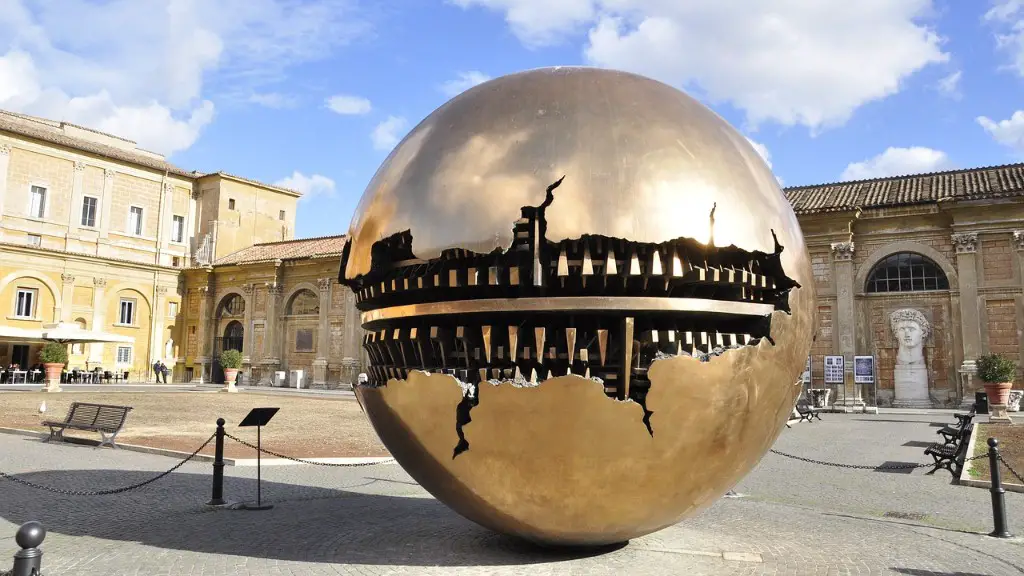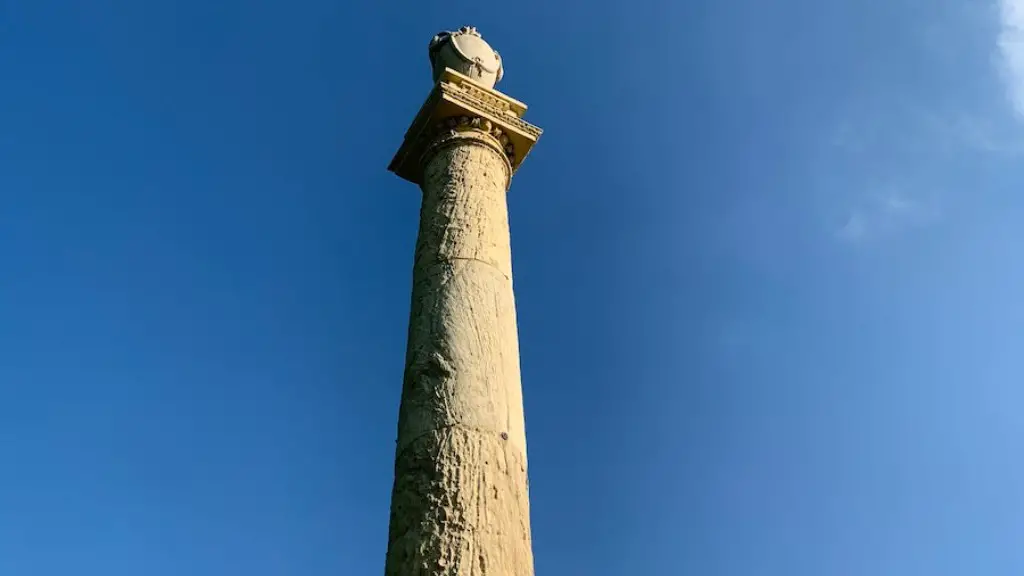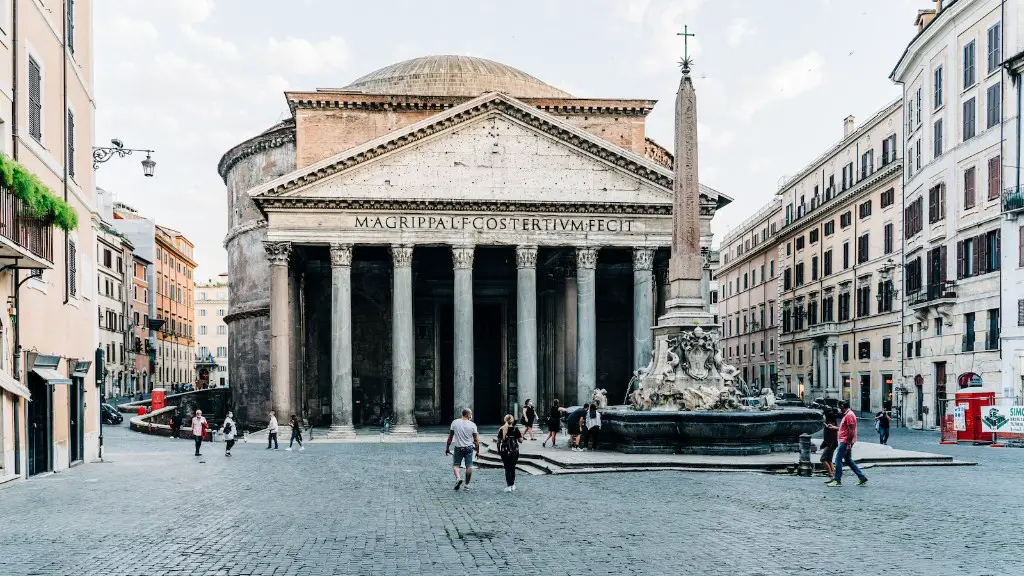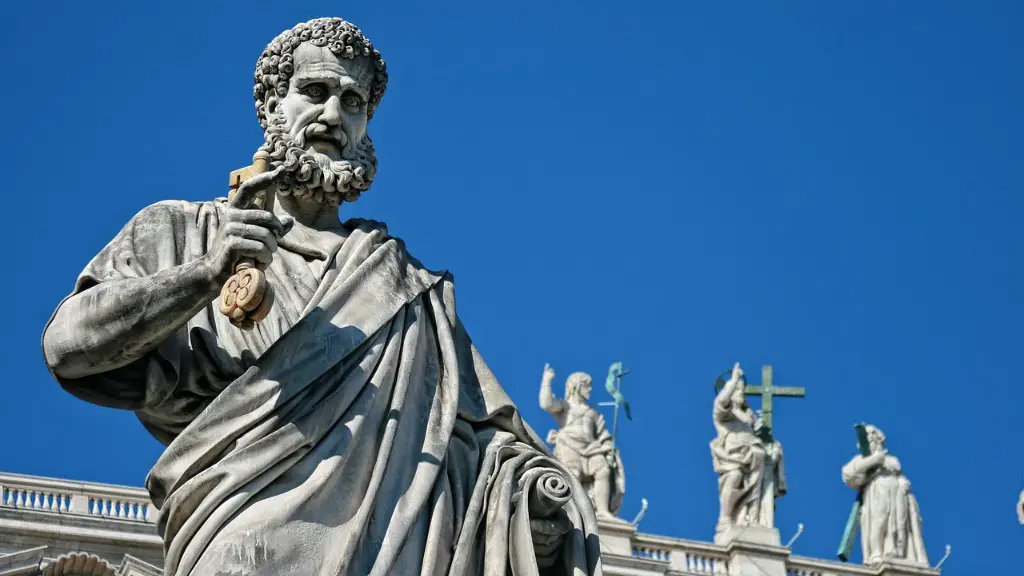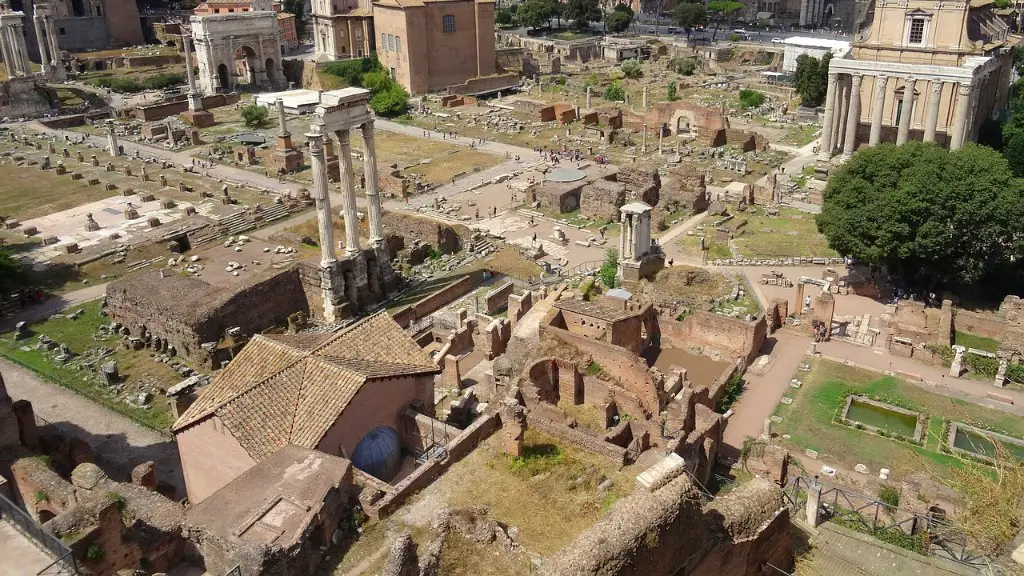Introduction
The Renaissance was an important period of European history that bridged the gap between Ancient and Modern times. The Renaissance is often called the “rebirth” of culture, as it rejuvenated arts, literature, science, and politics. The culture of Ancient Rome was an especially important influence on the Renaissance, as it had a major impact on art, language, law, and many other aspects of European culture. In this article, we will explore why Ancient Rome was so important to the Renaissance and how it shaped the culture of this era.
History of Ancient Rome
Ancient Rome was the capital of the Roman Empire, an expansive civilization that rose to prominence in the Mediterranean Sea region during the first century BC. This civilization was the product of the Etruscan civilization in Italy, which rose to power by the sixth century BC. Rome was a major center of trade and commerce while at the same time, a site of government and cultural development. Rome was known as the Eternal City and was home to monumental monuments, grand palaces, and grand amphitheaters.
Rome’s Influence on the Renaissance
The Renaissance was an era of great creativity and innovation, and scholars drew extensively on the culture, language, and law of Ancient Rome for inspiration. Ancient Rome provided a model for the written language, law, and political institutions of the Renaissance. Latin, the language of the Ancient Romans, was adopted by Renaissance scholars, and Latin translations of Greek works, such as those of Homer, were essential for the study and spread of culture during the Renaissance.
Law was also an area of study for Renaissance scholars, and much of the law of the time was based on Roman law, which deals with issues such as contracts and property. Additionally, many of the political institutions and structures of the Renaissance had their roots in Ancient Rome, such as the Senate and city councils.
The Legacy of Ancient Rome
The culture of the Ancient Roman period was influential in the Renaissance, and the legacy of this period can still be seen today. In architecture, the Renaissance was heavily influenced by the iconic architectural style of Ancient Rome, such as the Colosseum and Pantheon. In literature, Latin was used extensively during the Renaissance, and the Roman authors such as Virgil and Cicero were used as a source of inspiration by Renaissance authors. In politics, many of the political systems of the Renaissance had their roots in Ancient Rome, such as the Senate and city councils.
Impact on Art and Literature
Renaissance art was heavily influenced by the art and sculpture of Ancient Rome. Artists studied classical forms, such as those portrayed in the works of the sculptor Raphael or the poet Virgil. The Renaissance period produced some of the greatest works of art in history, and many of these works were inspired by the art of Ancient Rome. The Renaissance was also a period of great literary achievement, and many Renaissance authors were inspired by the Latin poetry of the Ancient Roman era.
Conclusion of Rome’s Impact
Rome was an important source of inspiration for the Renaissance, and its legacy can be seen in almost all aspects of the culture of this period. The Latin language and Roman law were adopted, and artists and writers drew heavily on the art and literature of Ancient Rome. The culture, language, law, and political institutions of Ancient Rome had a major impact on the culture of the Renaissance, and the legacy of Ancient Rome can still be seen in many aspects of society today.
Roman Law and its Impact on the Renaissance
Roman law was a major influence during the Renaissance, and the law of this era was heavily based on Roman law. Roman law was based on a system of laws called the Corpus Juris Civilis. This system was developed in the 5th century AD and was used as the main text on law during the Renaissance. This system of law provided a structure and framework for the legal institutions of the Renaissance, and the Renaissance saw an increasing appreciation of the Roman legal system.
Latin and its Role in the Renaissance
The Latin language was the official language of the Roman Empire and was widely used in the Renaissance. Latin was seen as the language of prestige, and it was used for literature, science, and education. Much of the writing of the Renaissance was conducted in Latin, and many of the ancient texts, such as those of the philosopher Aristotle, were translated into Latin to facilitate their study. Latin was also used to educate the common people, and much of the writing from this period was in Latin.
Rome and the Spread of Culture
The culture of Ancient Rome had a major influence on the culture of the Renaissance and spread to other parts of Europe and the world. Rome was a major center of trade and commerce, and its culture was spread far and wide. The Roman Empire also played an important role in the spread of Christianity, and many of the cathedrals of the Renaissance were based on the architecture of Ancient Rome.
Rome and the Advancement of Technology
The Renaissance saw an increasing appreciation of the technology used by the Ancient Romans. Rome was the capital of a major empire and had access to advanced technology, such as the use of concrete and plumbing. This technology was used extensively during the Renaissance, and many of the buildings of the period used these technologies. This use of advanced technologies allowed the Renaissance to build grand structures and monuments.
Rome and Education
Rome was also a major center of learning, with renowned universities such as the University of Bologna. This university was founded in the 11th century and became a major center of learning for the Renaissance, as it was a place where scholars could access ancient texts and study under the tutelage of renowned teachers. The Latin language was an important part of education during this period, and students were taught Latin in order to understand the writings of ancient authors.
Ancient Rome and Medicine
One of the most important legacies of Rome was its knowledge of medicine. During the Roman period, the practice of medicine was advanced, and physicians had access to advanced techniques such as surgery and herbal remedies. This knowledge was passed down to the Renaissance era, where it was used to treat diseases and advance medical knowledge.
Rome and the Spread of Ideas
Ancient Rome was an important source of ideas during the Renaissance, and this period saw the spread of ideas from Rome to other parts of Europe and the world. The spread of commerce and culture helped to bring ideas from Rome to different parts of Europe, and this in turn helped to spread the culture and ideas of the Renaissance.
Rome and Religion
Religion was an important part of the culture of Ancient Rome, and the Renaissance saw a revival of religious thought. Ancient Rome was the birthplace of Christianity, and the spread of the faith had a major impact on the culture of the Renaissance. It was during this period that the Catholic Church began to become a major force in European politics, and the culture of the Renaissance was deeply influenced by the Christian faith.
Roman Value System and its Impact on the Renaissance
The value system of Ancient Rome was an especially important influence on Europeans during the Renaissance. This value system was based on Roman virtues such as stoicism, a sense of civic duty, and honor. These values were embraced by the citizens of the Renaissance, and this period saw an appreciation of Roman law, culture, and value system.
Rome and its Impact on Modern Society
The legacy of Ancient Rome can still be seen in many aspects of modern society. The Latin language is still used in many countries, and the legal system of many modern nations is based on Roman law. Rome has also left its mark on art and architecture, with many of the iconic structures of the Renaissance taking inspiration from the art and architecture of Ancient Rome. Additionally, the spread of Christianity from Rome still influences the values and culture of many modern societies.
